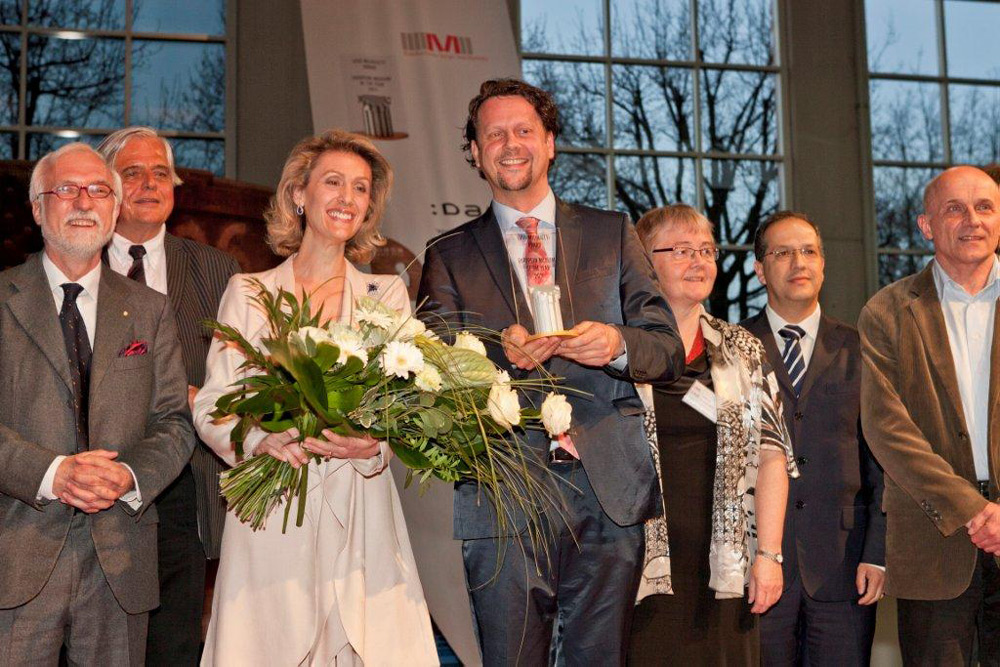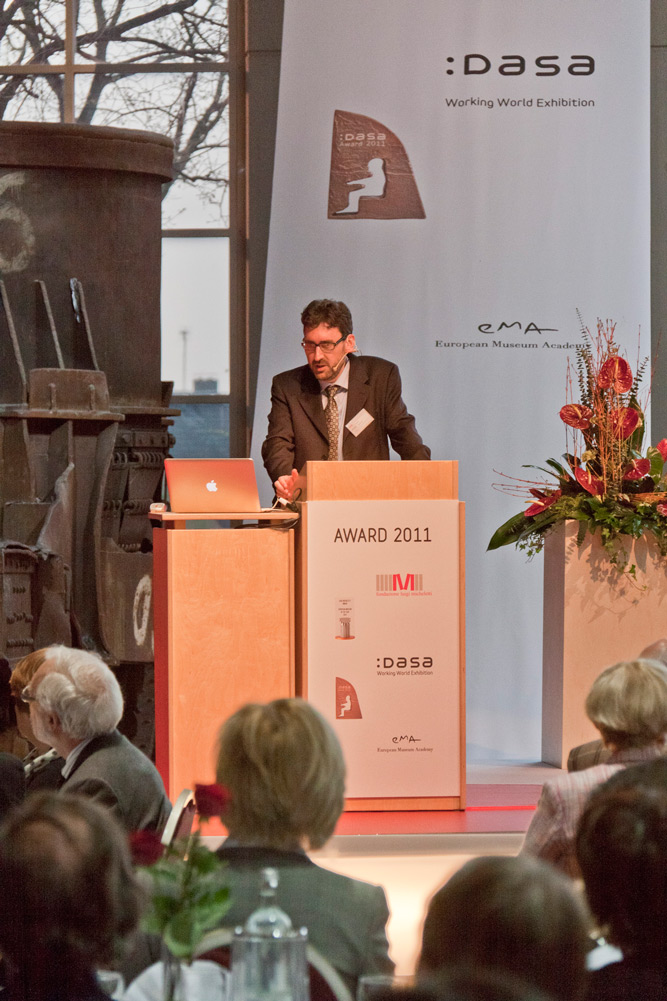Luigi Micheletti Award

The 16th edition of the Luigi Micheletti Award for scientific, technical and industrial museums, organised by the European Museum Academy in association with the Luigi Micheletti Foundation in Brescia, celebrated with a Presentation Ceremony and associated seminar in Dortmund, Germany, hosted by DASA German Occupational Safety and Health Exhibition. DASA was the first winner of the Micheletti Award, in 1996.
The winner of the 2011 Award was announced on Saturday 9 April, during a ceremony attended by representatives from 16 European countries, in the Steel Hall of DASA, and was followed by an Official Dinner. The winner was announced by Dr Wim van der Weiden, Chairman of the Judging Committee and presented by H.R.H. Princess Sibilla of Luxembourg, who is a member of the Jury.
The State Textile and Industry Museum (TIM) in Augsburg opened in January 2010 in the halls of the former Augsburg worsted yarn spinning mill, founded in 1836. The permanent exhibition explores the textile production process, from the raw textile fibres, the spinning, weaving and refining stages, right up to the tailored item of clothing. In the museum’s own weaving mill historical looms demonstrated by former textile workers produce a vast array of textiles, enabling visitors to experience the sounds, sights and smells of the original mill. A section devoted to fashions of the past two centuries illustrates the different body concepts which have redefined clothing with each new era. The museum tells the story of the workers and the entrepreneurs whose lives were shaped by the industry from the 19th century onwards: exhibits portray the economic, social, political and cultural aspects of work in the textile industry, extending the history into the present day, focusing on high-tech textiles. Of particular note is the pattern book collection of the New Augsburg Calico Factory (1780s-1990s) which contains more than 1.3 million printed fabric patterns.
The judges said: the museum starts with the great advantage of being in an original building of the former industrial area of the city which is in the course of rehabilitation. Technical history is explained very well, with volunteers operating working textile machines which show visitors the production process. The story of the employers and workers is well illustrated and provides a good picture of the social history of the period. Particularly commended is the pattern section, designed by the Brückner Studio. Here many patterns can be projected by the visitor onto giant-sized female figures, and visitors can change not only the pattern, but also the colours, size and combination of patterns.
The package of qualities the museum provides comprises the extension of the presentation to include future technologies and development; good educational programmes for children from the age of three upwards; a textile garden; and the commissioning of young designers to produce new patterns, some of which are on sale in the shop, with a very original selection of products. The ambition of the director is to become a meeting place, an aim which is fostered by hosting jazz concerts and fashion shows, and the establishment of links with other cultural organisations.
Staatliches Textil- und Industriemuseum Augsburg (TIM), (Director: Dr Karl Borromäus Murr) Augsburger Kammgarnspinnerei, Provinostrasse 46, D-86153 Augsburg, Germany tel +49 (0)821 81001-510; fax +49 (0)821 81001-531; www.timbayern.de


